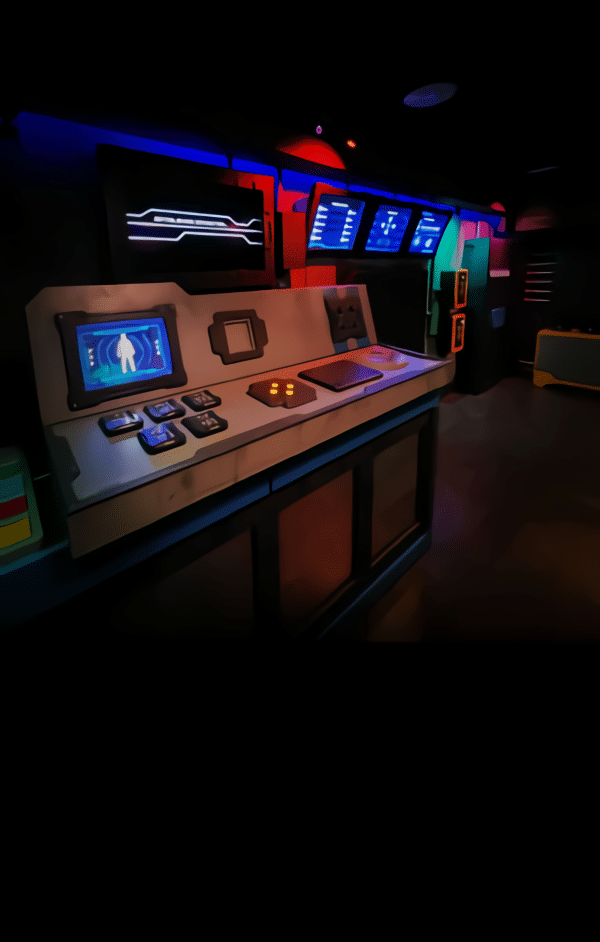Team-Oriented Puzzle Design
One of the strongest ways an escape room New York City location fosters collaboration is through puzzles specifically designed to require multiple minds. These aren’t challenges that one person can solve alone; instead, they rely on a mix of observation, problem-solving, and communication. For example, a riddle may need someone to locate a hidden clue, another person to interpret its meaning, and a third to apply it in the correct sequence. By structuring puzzles that span across skills and roles, teams are naturally encouraged to work together. The variety in challenge styles—from logical reasoning to pattern recognition—ensures that everyone has a chance to contribute.
Role Assignment Within Groups
Escape rooms thrive on players taking on natural roles. In high-pressure environments, individuals often gravitate toward tasks that suit their strengths—whether it’s leading communication, focusing on locks and clues, or analyzing complex riddles. Locations in New York City recognize this dynamic and craft rooms that allow for diverse roles. This structure not only enhances the group’s efficiency but also boosts the sense of contribution among all players. With games like End of Days A or Carbon: 3708, there are opportunities for players to divide tasks strategically while working toward a common goal.
Communication as the Core Strategy
No matter the room, clear communication is essential. Escape rooms are intentionally designed with scattered information, making it impossible for one player to see the whole picture. By requiring teams to constantly share findings, updates, and possible solutions, the experience nurtures collaboration. Locations in midtown especially highlight this by ensuring that clues are spread out in a way that encourages discussion. Success comes from building a collective understanding, and each successful escape is proof of the group’s communication skills.
Time Pressure as a Collaborative Catalyst
The ticking clock is more than just a countdown; it’s a tool to unite players. Under time limits, teams must coordinate efficiently, listen actively, and adapt quickly. In an escape room New York City experience, the urgency of a 60-minute timer sharpens focus and reduces hesitation. Players quickly learn that collaboration is not optional—it’s the only path to victory. As the clock winds down, teamwork becomes the driving force that holds the group together.
Thematic Immersion That Binds Teams
Themes play a significant role in fostering collaboration. When groups step into story-driven environments like Hydeout or End of Days B, they’re immersed in scenarios where unity is essential. Themes often create a sense of urgency tied to narrative goals, such as saving the world or escaping a villain’s lair. This shared immersion strengthens bonds among participants, making them feel like a team of characters in a story rather than just a group of players. That transformation deepens cooperation and ensures everyone is equally invested.
Inclusive Challenges for Varied Skillsets
Escape rooms are carefully designed to welcome different strengths within a group. While one player might excel at math-based puzzles, another might have a keen eye for spotting hidden symbols. Locations across New York City understand this balance, creating multi-dimensional challenges that ensure everyone can contribute. These inclusive puzzles encourage quieter participants to speak up, fostering an environment where collaboration thrives, and no voice goes unheard.
Encouraging Leadership and Adaptability
Every escape room naturally brings out leadership qualities in certain players. Some people step into the role of delegating tasks, while others act as mediators to ensure smooth teamwork. Escape rooms encourage this growth by presenting moments where leadership is crucial—whether to direct focus on a time-sensitive puzzle or to calm tensions when ideas clash. This dynamic makes escape rooms not just entertaining but also valuable lessons in collaborative leadership.
Post-Game Reflections and Group Growth
Collaboration doesn’t end when the timer runs out. After the game, many escape room locations provide debriefings where groups can reflect on their performance. This process highlights moments of strong teamwork and identifies areas for improvement. Reflecting on how players collaborated—who communicated well, who led effectively, and where breakdowns occurred—translates into stronger collaboration in future challenges. This final step ensures that the experience has lasting value beyond the room.
Building Trust Through Shared Success
Trust is essential for collaboration, and escape rooms offer the perfect testing ground. Players learn to rely on one another as they pass along clues, test ideas, and combine efforts. When the group succeeds, it builds a shared sense of accomplishment that strengthens trust among team members. Even in cases where the escape is unsuccessful, the collective effort creates a bond rooted in shared experience.
Why Escape Rooms Are Ideal for Group Collaboration
Escape rooms in New York City combine design, storytelling, and pressure to create an environment where collaboration isn’t optional—it’s the only way forward. By balancing puzzles across skill levels, encouraging leadership, and demanding constant communication, they ensure that every group leaves with stronger collaborative skills. Whether for friends, families, or corporate teams, these rooms act as a fun but powerful exercise in teamwork.
Conclusion
Escape room New York City venues excel at transforming a group of individuals into a cohesive team. Through puzzles that require multiple perspectives, immersive themes that unite participants, and debriefings that highlight teamwork, they provide much more than entertainment. They serve as living lessons in communication, leadership, and collaboration—skills that extend far beyond the game.
Frequently Asked Questions
Q1: How do escape room New York City locations encourage group collaboration?
A: They encourage collaboration by designing puzzles that require multiple players, promoting communication, fostering trust, and creating immersive themes that unite teams under a shared mission.
Q2: What role does communication play in an escape room?
A: Communication is essential, as clues are scattered, and only by sharing discoveries can teams solve puzzles effectively and complete the challenge.
Q3: Do escape rooms assign specific roles to participants?
A: While not officially assigned, roles emerge naturally—leaders direct, problem-solvers analyze, and observers focus on details. This organic role assignment improves teamwork.
Q4: Why is time pressure important in escape rooms?
A: The time limit creates urgency, forcing players to collaborate quickly, make faster decisions, and rely on one another’s input.
Q5: How do escape rooms benefit groups outside of entertainment?
A: They provide practical lessons in leadership, adaptability, trust, and teamwork, making them ideal not only for fun but also for corporate training and group development.









